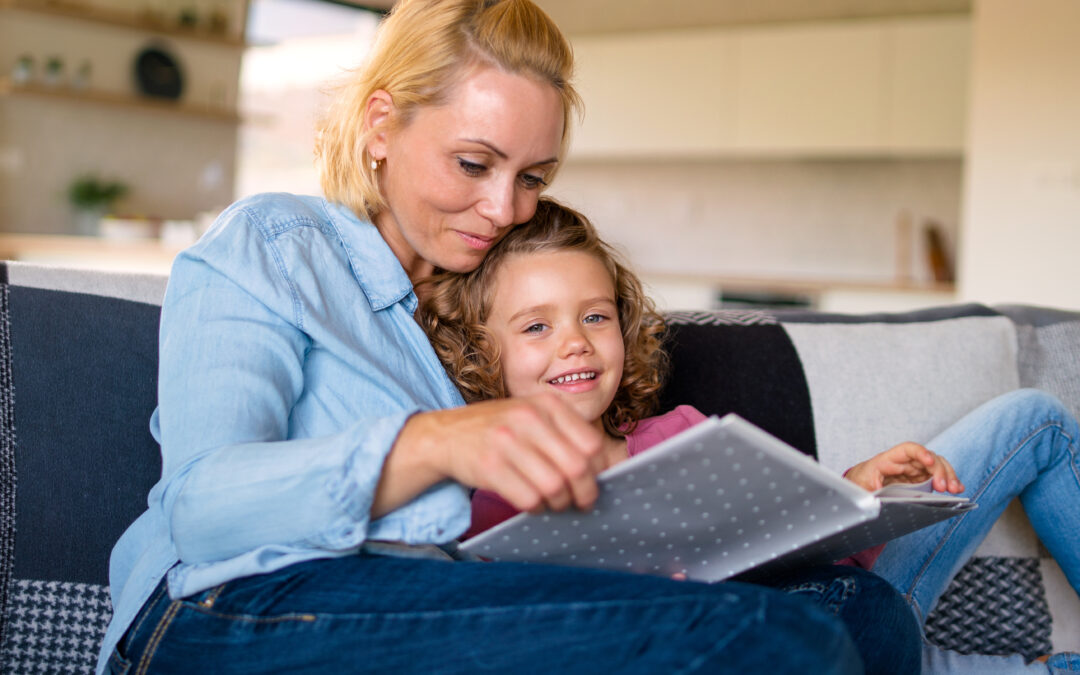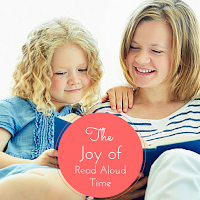The Joy of Reading Aloud
This is the first of a three-part series by Maureen Wittmann. You can find the other two articles here: The Art of Reading Aloud (how to do it) and The Why of Reading Aloud (the educational benefits).
“My papa is dead!” she kept whispering to herself. “My papa is dead!”
As I read these lines from A Little Princess, my six-year-old daughter Mary and I cried. Our hearts poured out for the Little Princess. In sharing the deep emotions of the story’s heroine, Sara Crewe, my daughter and I grew closer.
That 6-year old child is now a 23-year-old wife and mother. I believe our read-aloud time throughout her childhood helped to shape Mary into the woman she is today. A woman any mother would be proud to call daughter.
Reading books aloud to children for enjoyment creates bonds that will never be broken. By sharing common adventures through stories we come together as a family. I believe children will share their thoughts, their feelings, more naturally if they are accustomed to reading aloud with their parents.
Think about little 6-year-old Mary and me crying together, cuddled on the couch, sharing emotions. As a child grows into adolescence and later into adulthood, it’s important for that child to share her emotions with her parents. It’s important that children are comfortable going to their mom or dad when they are in trouble or when they are feeling strong emotions – fear, sadness, and, yes, joy as well.
When my daughter went through the bumps and hurdles of growing up, I wanted her to be comfortable coming to me to talk about them. This would give me the opportunity to help her and guide her. Just as we cried together when little Sarah Crewe’s papa died, we cried together when real life tragedies entered into our real life. We also laughed together and shared many special, happy moments together.
For more than a decade now, I’ve led middle school and high school book clubs. I’ve also taught high school literature for our local homeschool co-op. Last spring the son of a dear friend sat in on my literature class to see if it’s something he wanted to join the following year.
When I asked what kind of fiction he enjoyed, he let me and the class know that he doesn’t like fiction because “fiction isn’t real.” Aghast, I asked my students if they agreed fiction is not real. The room lit up and everyone was talking at once.
One boy explained, “Fiction is real because it shares real emotion. Sure, when I read Ender’s Game I was aware it’s unlikely the Earth will be attacked by giant alien bugs anytime soon. But there were real problems, and real emotions, and real heroes.”
Another student pointed out that “Maybe bad fiction is fake, but good fiction is real. It’s real because it possesses natural law. It’s real because it reflects the One, True story.”
Yet another student stated, “Good fiction reflects society. Look at Fahrenheit 451 and other dystopias. The first thing fascist governments do is ban fiction and only allow nonfiction. Why is that? I think it’s because fiction is more real than nonfiction. Nonfiction doesn’t stir real emotions.”
That prompted another student to bring up Uncle Tom’s Cabin, which stirred a nation to rise up against slavery. It was a fictional book that brought the horrors of slavery to the forefront of a nation’s brain.
Those students were making real bonds through reading literature. One of the things I love about leading homeschooled students in literature clubs and classes is that most of them come with a deep love for the written word. I believe this is because most of them have been raised on a healthy diet of read-aloud time.
The bonds created through read aloud time are not only for children. My mom, who passed away last year, loved to be read to. In her later years, suffering from failing health, she would ask me to read to her. It was a very special time together. And you know what she wanted me to read to her? Nancy Drew!
I know more than one married couple, including my oldest son and his wife, and another couple with 4 children, who read aloud to one another. I can’t imagine many things that are more romantic. You’re never to old to read to one another.
One of the wonderful things about reading aloud to your child is that you are also, in essence, reading aloud to your future grandchildren, great grandchildren, and so on. Remember my daughter Mary? She is a mother of a beautiful 2-year-old son. She has read to him from Day One. When Richie comes to visit, he goes to the picture books, on his own, and picks out a selection. He’ll then climb onto the easy chair waiting to be read to. Since his sister was born 5 months ago he can be found with a book in hand, reading to her.
Not only does reading aloud improve your children’s lives but also future generations. They know intuitively that they should read to their children. You’re passing the torch.
You can also help your child grow spiritually through reading aloud. It gives you the opportunity to discuss moral dilemmas presented in the story and to ask your children open-ended questions about the characters and their actions. This opens up the lines of communication between parent and child.
Jesus taught us through story, through parables, 46 parables in fact. Jesus used images and characters taken from everyday life to illustrate his message to us. His stories appeal to young and old, poor and rich, educated and uneducated alike. They move our hearts.
Just as my literature students shared, good stories stir our hearts. They create emotions that move us to action. They reflect the Good, the True, and the Beautiful. Jesus didn’t just tell us, “Be kind to others”, he told us the parable of the Good Samaritan. He didn’t just tell us, “Share the Good News”, he told us the parable of the Lamp Under the Basket. He didn’t just tell us, “If you lose faith, I’ll still watch over you and I’ll rejoice when you find it again”, he told us the parable of the Lost Sheep.
I encourage you, if you don’t already, make read-aloud time a regular event in your home.
This article originally appeared at Catholic Mom on October 12, 2015.






